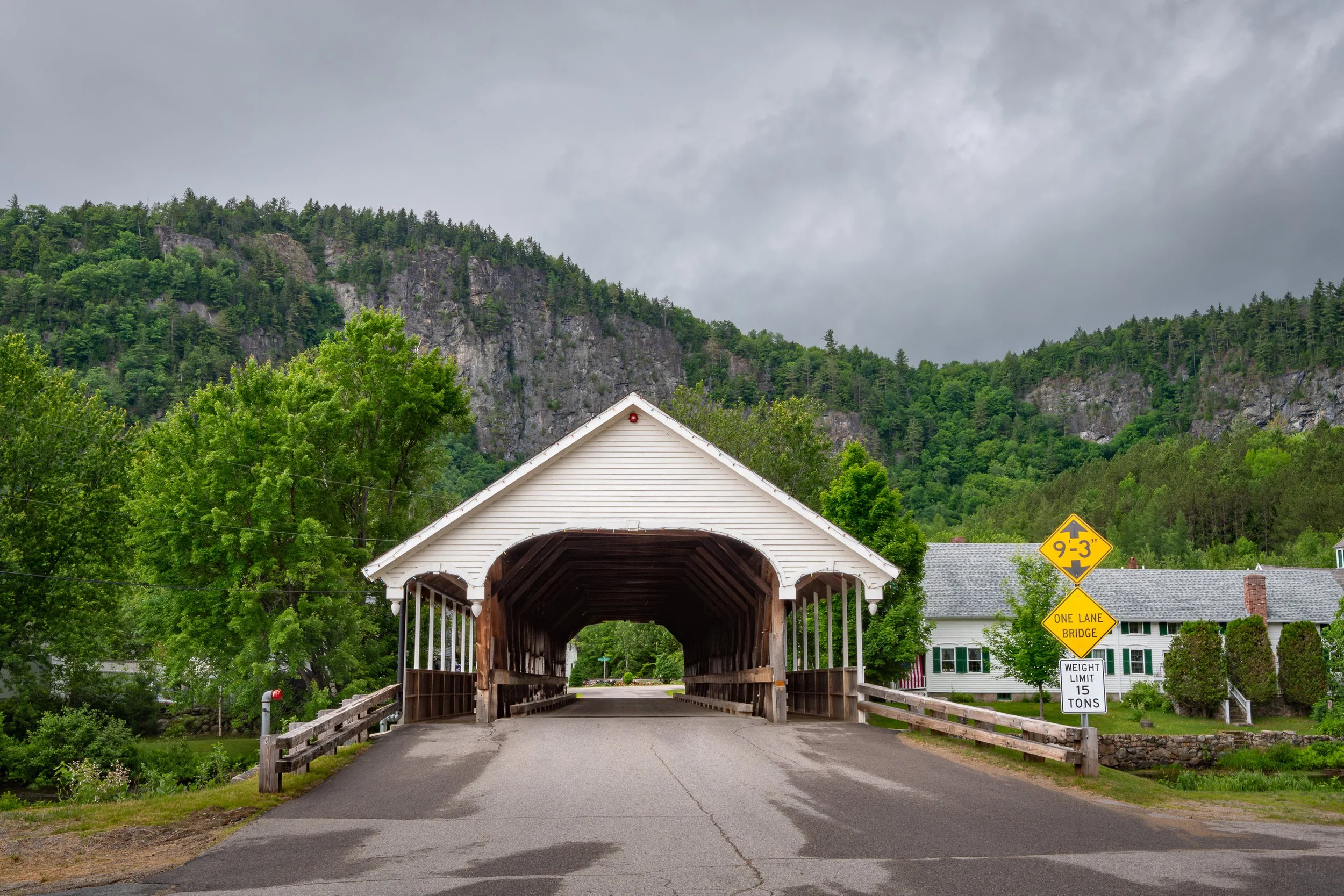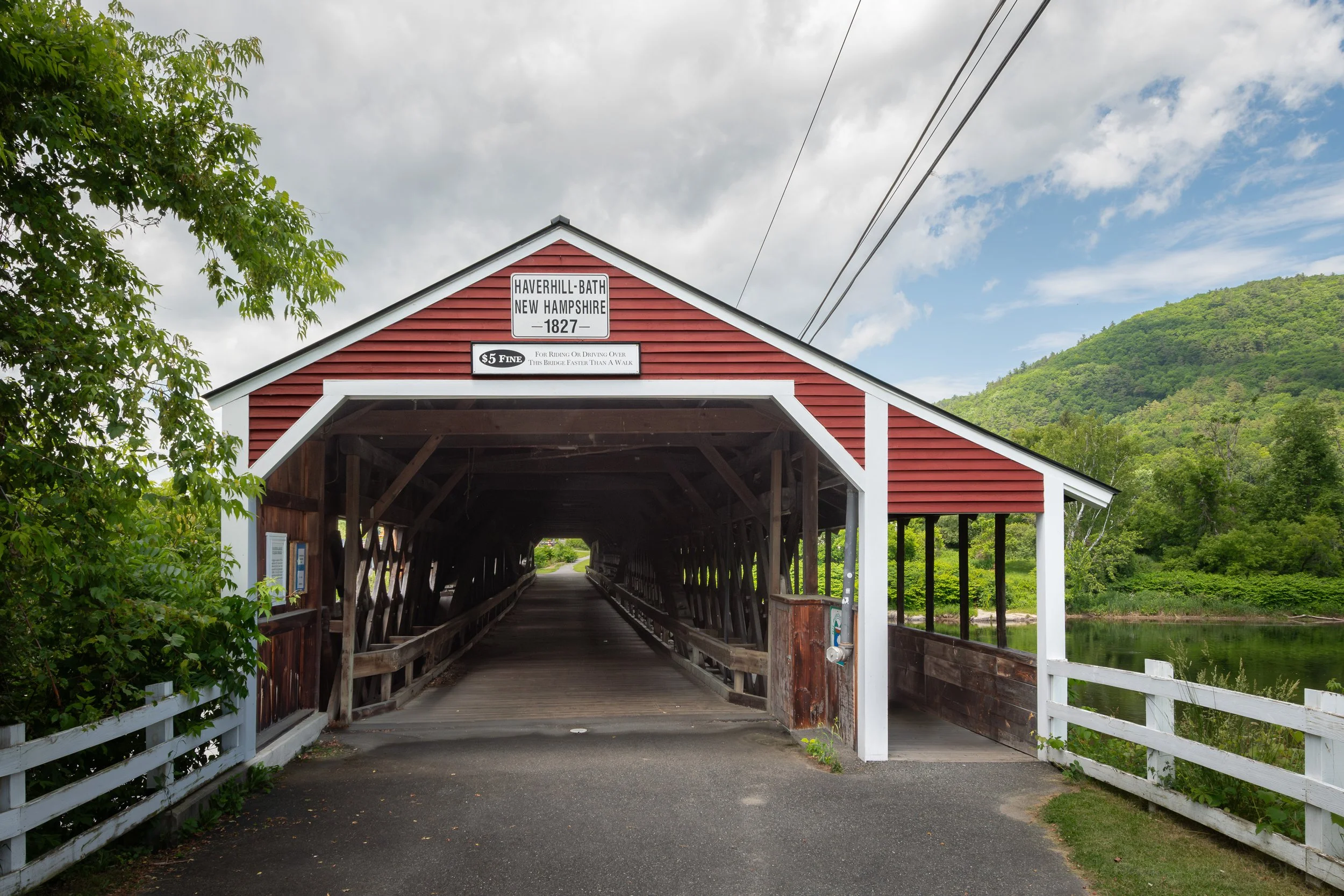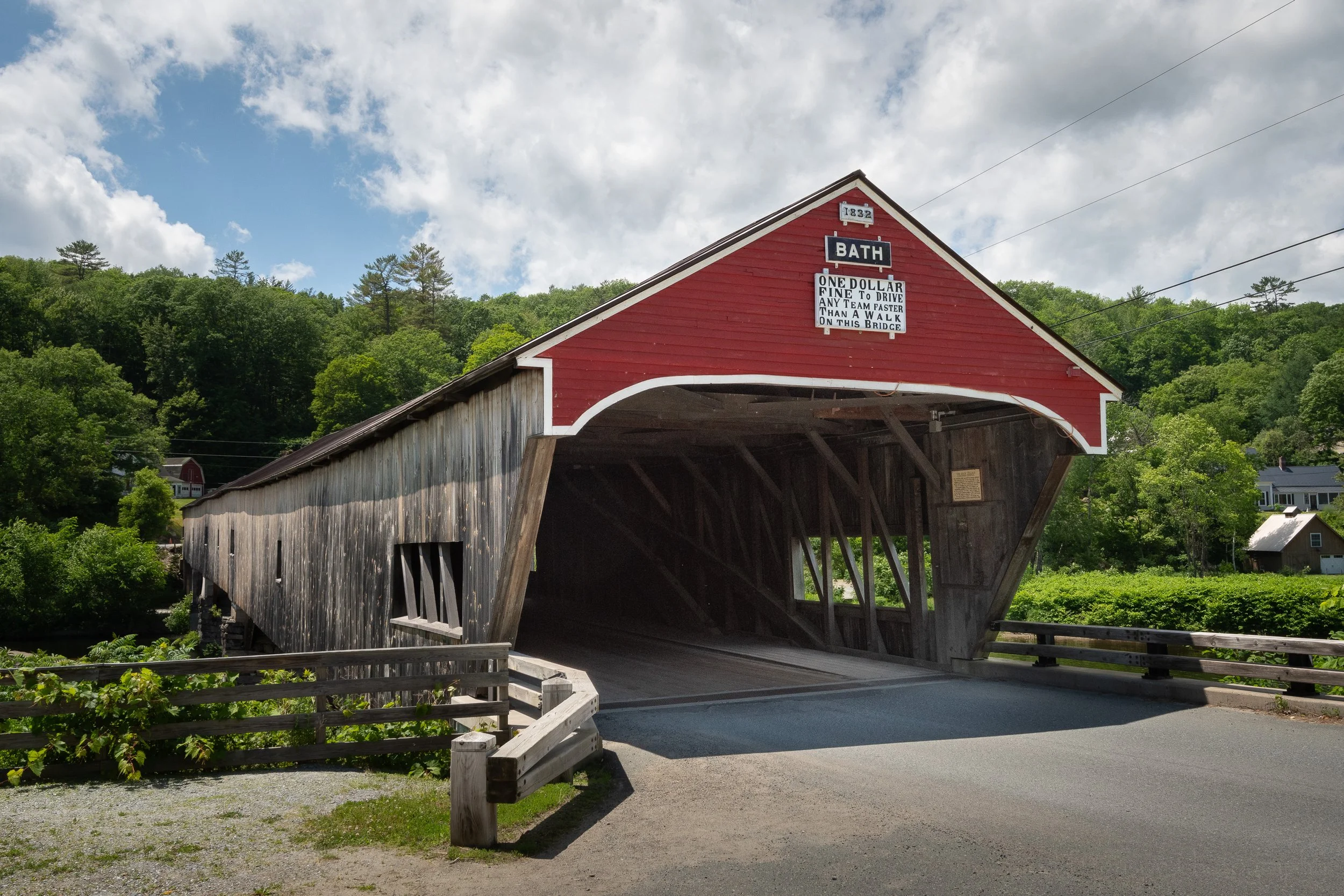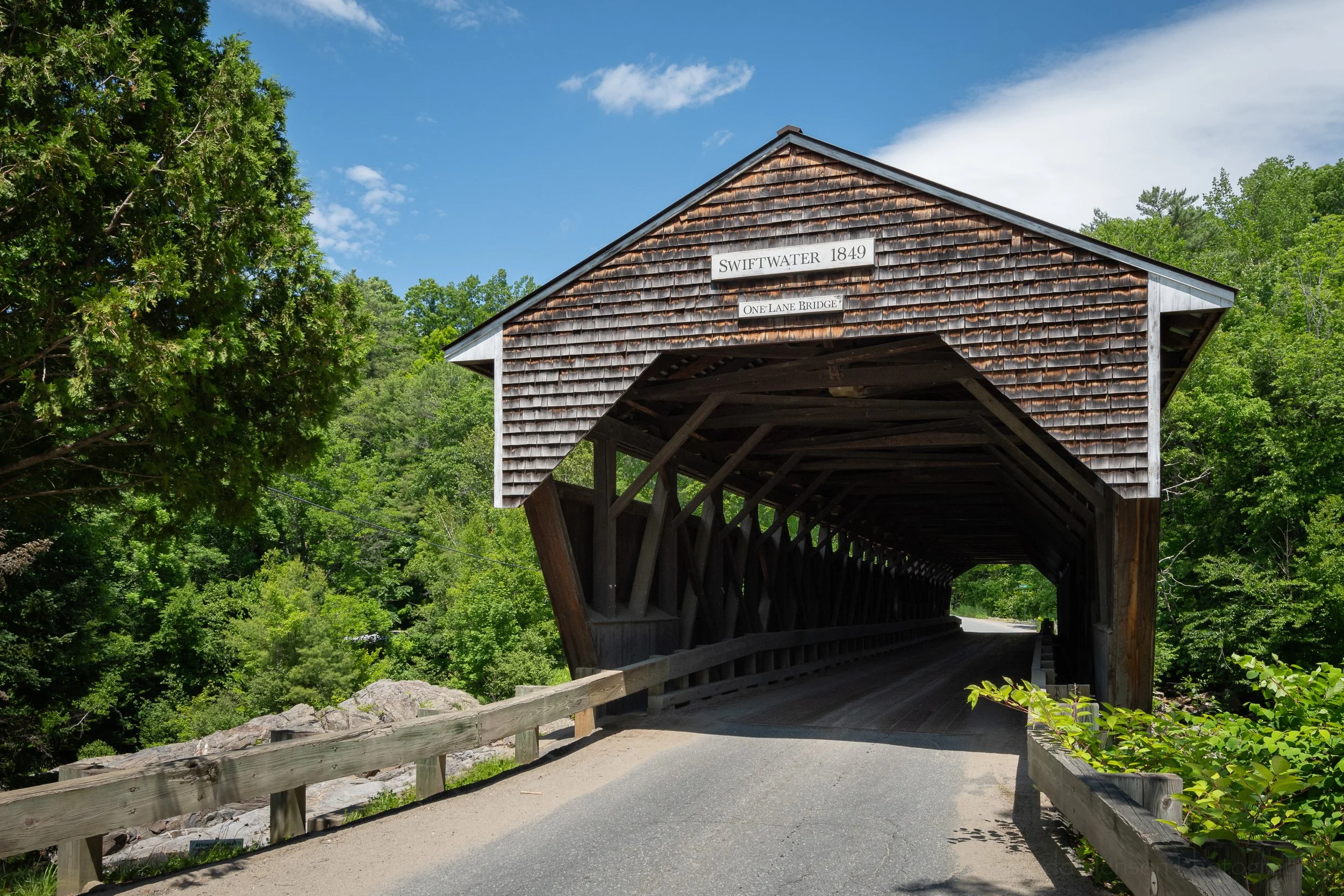Facing the Columbia Covered Bridge from the New Hampshire side.
The Columbia Bridge spans the Connecticut River, connecting the town of Columbia, New Hampshire, to that of Lemington, Vermont. As is so often the case, this was not the first bridge at or near this location, with multiple instances before that were destroyed by floods, wind or fire. All the previous incarnations had been toll bridges, with folks who frequently had to cross the river purchasing annual subscriptions to assure they could purchase groceries or board the train on the New Hampshire side. The first bridge was built around 1820, and the current bridge was constructed in 1912.
An angled view of the Columbia Covered Bridge in New Hampshire, with the Connecticut River below.
The Columbia Covered Bridge as seen from the New Hampshire shore of the Connecticut River.
Columbia Bridge is a single-span bridge built using the Howe truss design based on the 1840 patent by William Howe. This design features metal vertical supports to provide extra support beyond what wooden supports could provide. As with other bridges that span between states there were sometimes disagreements about which side would provide funding for construction and/or repairs. And both towns are small enough they did seek funding from their respective states as well as other organizations and the federal government.
A view of the Connecticut River from below the Columbia Covered Bridge.
The Columbia Covered Bridge as seen from Vermont.
Columbia Covered Bridge is number 33 in the New Hampshire list of covered bridges. We visited this bridge on June 20th, 2025. Click here to see the list of covered bridges we visited while traveling through New Hampshire in mid-2025.
Resources
Most of the details within this post were learned either from signs at the bridge or from the fantastic book, Covered Bridges of New Hampshire by Kim Varney Chandler, which I purchased from a small local shop in Lincoln while on our trip. It’s well worth it if you plan to visit the area or are just interested in covered bridges and their history and construction. The link takes you to the author’s website for the book with lots of extra information and with links to let you purchase directly from her.
Do you enjoy these posts?
Sign up to receive periodic emails with updates and thoughts. Don’t worry, I won’t spam you. And please consider purchasing artwork or products from my online store, and using my affiliate links in the sidebar to the right when shopping online.
I appreciate your support!










